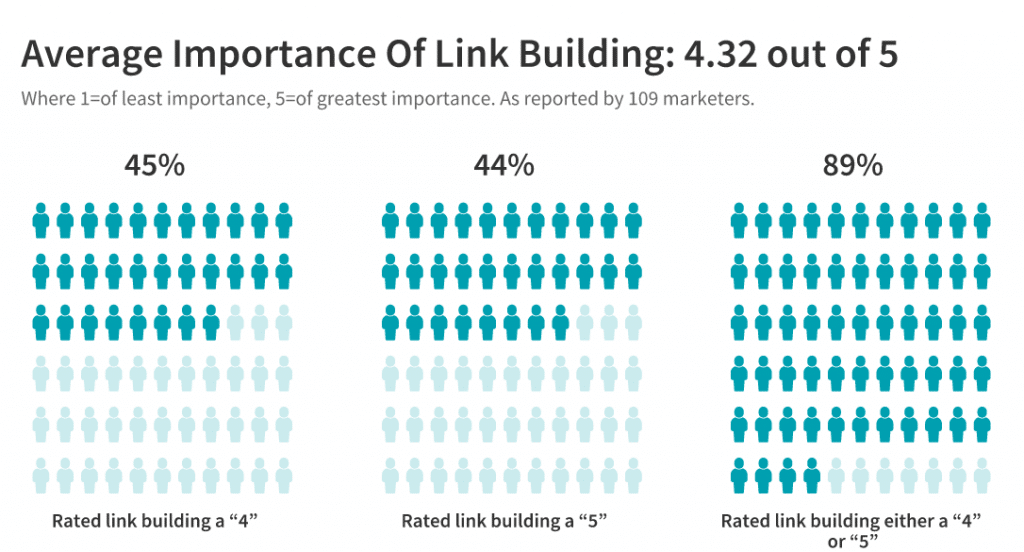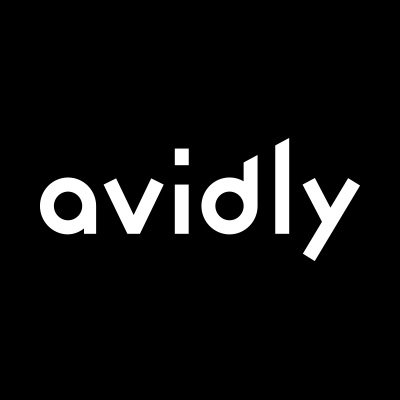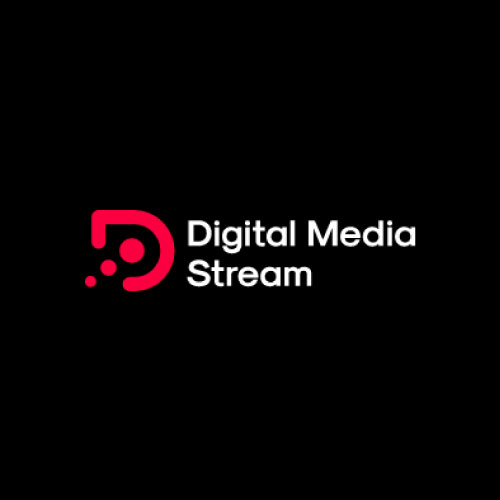Guide: How Do You Build A Successful SaaS Link Acquisition Strategy?


Link building is one of those activities that will never get old.
Getting other businesses and people to link to your content is useful for basically every company out there, and SaaS is no exception. This has a massive impact on search engine optimization (SEO) — Backlinko found that the top result on Google has, on average, 3.8x more backlinks than other sites.
Of course, the internet is a crowded place, and even big, well-known organizations sometimes struggle to get enough links. You need the right link acquisition strategy to succeed here, and that requires a multi-pronged approach and the right guidance.
In the rest of this article, we’ll show you what link acquisition is, why it’s important for SaaS companies, and how you can build a strategy that works.
What is link acquisition and why is it important for SaaS?
Link acquisition is the process (or, more accurately, the series of processes) of getting other people on the internet to link to your website pages — known as a backlink.
The idea is built on a simple premise — Google thinks that websites and pages are more credible and valuable if other websites keep linking to them. The more links you get from high-quality sources, the better your page will rank in Google’s search results. That means more organic traffic, a stronger presence, and hopefully more customers.
Link acquisition is the process of gathering as many of these links as possible, through many different methods.
So how do you do it? Let’s find out.
How to build a successful SaaS link acquisition strategy

The trick to link acquisition is to think of it as a multi-pronged process. Just like the best investment strategies diversify their funds between many different assets, the best link acquisition strategies use a diverse range of tactics to get links.
Create amazing content
The number one thing you can do to drive more links to your website is to create mind-blowingly good content that people want to read.
A good piece of content is a link acquisition machine because people will choose to link to it even without you asking. On top of that, when you start using the outreach methods we’ll share in this article, it’ll be much easier to convince people to link to your page if your content quality is genuinely great.
What exactly makes a piece of content amazing? Let’s look at a few key factors:
It answers a burning question
The best pieces of content on the web all have one thing in common: they find a question that people really, really want answered and then provide a thorough, valuable answer to that specific question.
This involves research, and a genuine understanding of what your customers are interested in. Let’s say your SaaS company is an accounting solution for small businesses. Spend time talking to your customers and find out what questions and problems keep them up at night — like filing taxes or saving time invoicing — and build content that directly answers those questions.
It’s engaging
In the era of ChatGPT, anyone with a keyboard and an internet connection can smash a few buttons and churn out a piece of content on any given topic. But that doesn’t mean it will be any fun to read.
The best content is engaging, interesting, and digestible. It provides value and information without boring the reader to death. And don’t just rely on written words — spice up your blog content and pages with infographics, embedded videos, and GIFs.
It’s shareable
The whole point of link acquisition is to get more eyes on your content. If you create content that people want to share with their friends, they will be much more likely to link to it, and they’ll also share it through other channels.
Relatable, relevant content that focuses on common problems and relevant keywords is the perfect recipe for shareability.
How to acquire links: key methods

OK, now that you have a library of game-changing content lined up, it’s time to take your link building strategy to the next level.
There are lots of methods you can rely on here, so let’s break down some of the most common and useful.
Find brand mentions
If you already have some presence in your industry, to the point where people know your name and use it publicly, you have a ready-made link-building opportunity right in front of you.
This method involves hunting down instances where other websites have specifically mentioned your brand, without linking to you. Then, get in touch with someone at their company (more on this later on) and simply ask them nicely to link out to your website.
This works well because the website in question already mentioned you. You don’t need to ask them to work your brand into their content somehow, or offer any kind of incentive — they took the first step and you just need to ask for a link.
Offer to write a guest post
Google weights backlinks more heavily if they come from a credible, reputable source. For example, a backlink from Apple.com is going to be worth a lot more in terms of SEO than a backlink from your cousin’s Breaking Bad fan website.
The trouble is, that getting high-quality backlinks from authoritative sites can be tough. It helps greatly if you can offer them something in return — like a well-written blog post on their website based on a topic you have personal experience with. According to AuthorityHacker, guest posting is the most popular tactic for building links.
Your guest post will usually contain a small bio at the end, letting the reader know who you are and why your opinion matters.
Guest blogging is a great technique because it’s a win-win — the website gets a valuable piece of content written by a credible expert, and you get to boost your authority and reach by appearing on a well-known site. AND you get a high-quality backlink!
Link insertions
Link insertions are another common link-building technique, and are much lower-effort than guest posting.
This technique involves reaching out to other websites in your niche and simply asking to insert links to your website into their existing content. Often, you’ll pay a fee for each link you insert.
This can work well if you already have some kind of reputation in your space, or if you have a ton of high-quality content that other businesses will be excited to link out to.
Another great option here is to look for broken links - where others have tried to link to your site but it hasn't worked out. Offering to fix the broken link is a simple way to get a backlink.
Go on podcasts
Podcasts have really blown up in recent years, and are now one of the best ways to get yourself in front of your target audience and attract more traffic to your business. They’re also an excellent link building strategy.
The overall principle here is the same as with guest posting — you appear on another company’s channels to speak on a topic you know something about, and in return, you can tap into their audience to gain exposure and traffic to your own website.
Outreach
As you’ve probably gathered by now, if you really want to get ahead with link building, and you aren’t a world-famous brand, you’ll need to take a more proactive approach. This means doing the infamous activity known in the trade as… outreach.
A lot of people dread this. Reaching out to strangers, begging for a favour? Eurgh.
But here’s some good news — there are a lot of effective strategies to make your link building campaign both more enjoyable and more successful.
Let’s check out some best practices:
- Be original. Your emails and DMs shouldn’t sound like a generic, copy-pasted message. Avoid bland, cookie-cutter phrases like “I hope this finds you well” and use some humour and charm. Personalization is key, too — you should instantly show your prospects that you know who they are and what they do.
- Follow up, lots. Following up is the key to successful outreach. It’s common to get a response on your third, fourth, or fifth follow-up, so be persistent! Your follow-up messages should be polite, relevant, and offer something new compared to the previous ones.
- Show your prospects what’s in it for them. Don’t just beg for backlinks, show your readers what they stand to gain from working with you. For instance, they might get a high-quality guest post from a unique perspective, a knowledgeable podcast guest, or the opportunity to link to valuable content from a professional brand.
- Use multiple channels. Email, LinkedIn, Twitter, and in-person chats at events are all great ways to connect with and approach potential link-building partners. The best channels to use will depend on your industry, brand, and specific prospects, so don’t be afraid to experiment.
Who should you approach?
How do you find out the best people to reach out to for link-building opportunities? There are a few different criteria to pay attention to here:
They’re in your niche
Your targets should be in a similar industry to you, or at least they should create types of content that talk about the same topics and issues that your brand focuses on. This makes it far more likely that they’ll agree to give you a relevant backlink and puts you in a much stronger position when pitching things like guest posts and podcast appearances.
They have sufficiently high authority
As we mentioned earlier, Google doesn’t treat all backlinks equally. Links from sources that Google considers high authority will count for much more in terms of climbing the SEO rankings. If you specifically target sites with high authority domain ratings, you’ll be using your time and money much more effectively.
So how do you identify high-authority websites? Luckily, there are plenty of tools that can help you here, like Ahrefs, Moz, and SEMRush.
The two metrics to focus on are Domain Authority (DA) and Page Authority (PA). DA refers to the website as a whole, while PA refers to the specific page. The higher the score in these two areas, the more valuable your backlink will be.
It makes sense within your strategy
If you’re a smaller business with limited money and time, you may need to be a little more calculated about who you reach out to. Spend some time making a shortlist of the best, most relevant partners to contact here so you can stretch your money further and get the best results.
Common challenges with SaaS link acquisition
Like most things worth doing, SaaS link acquisition isn’t always easy. In fact, 41% of experts say link building is the most difficult part of SEO.
We’ve noticed a few common problems that businesses tend to run into here — let’s take a look at them and what you can do to avoid falling into the same trap.
Bad or irrelevant content
Just to hammer the point home, content is absolutely critical when it comes to link acquisition. The content pieces you create and share — on your own channels as well as guest posts — need to be high-quality, valuable, and relevant to your audience.
It might be tempting to rely on AI tools here, but be warned that over-reliance on this software can lead to derivative and uninspiring content that nobody wants to read, and this can harm your link-building efforts (and brand in general).
Not playing the long game (strong relationships)
Like so many things in business, building backlinks is about networking. You’ll be far more successful if you can build strong, ongoing relationships with other businesses and cultivate a solid reputation as a knowledgeable and reliable source of knowledge.
That means playing the long game — link acquisition is a long, slow process that builds over time. If a website isn’t ready to publish a guest post right now, for example, that doesn’t mean you should completely cut contact with them.
Quantity over quality
Some businesses approach link-building in terms of pure numbers. They aim to get as many links from websites as humanly possible, without much regard for the quality of those links. This is a bad idea — you’re far better off aiming for a smaller number of high-quality links from well-known, relevant websites with strong reputations.
Useful tools
Marketers today are lucky — there are tons of great tools and solutions out there specifically designed to help you get more links, improve your search rankings, and get more traffic on your pages.
Here are some of the best.
1. Semrush
Semrush is a fantastic overall SEO tool with features for researching keywords, optimizing content, and researching competitors. When it comes to link building, Semrush is particularly well known for the high quality of its backlinks data.
It’s also easy to use and intuitive. Pricing starts at $139.95 per month and goes to $499.95 per month.
2. Ahrefs
Ahrefs is another powerful tool for SEO that focuses on competitor analysis and link building. It has features to find the keywords your competition is using, build backlink strategies, audit your current website, and find opportunities for link acquisition. It comes with 5 pricing options, ranging from free to $999.
3. SE Ranking
SE Ranking is aimed at small and medium-sized companies and comes with a range of tools to make SEO easier and more manageable. When it comes to link acquisition, you can use SE Ranking to analyze backlinks, optimize content, and access high-quality data. There are 3 pricing options ranging from $65 to $269.
4. BrightEdge
BrightEdge uses a deep learning engine to help businesses and marketing teams accurately track their content engagement across all relevant channels. It’s a great choice for those who want to take a more empirical and data-driven approach to effective link building and SEO in general.
What’s Next?
In this guide, we gave you an overview of what link acquisition is and how it works. This is just the beginning, though — like everything in marketing, the only way to succeed with link building is to get out there and start testing for yourself.
The more you get in the trenches and try out different approaches, the more you’ll start to see real results and climb those search engine rankings.
Find a B2B SaaS Expert
We've collected a directory of B2B SaaS experts and agencies that we've reviewed and categorised based on service and specialism for your review.













